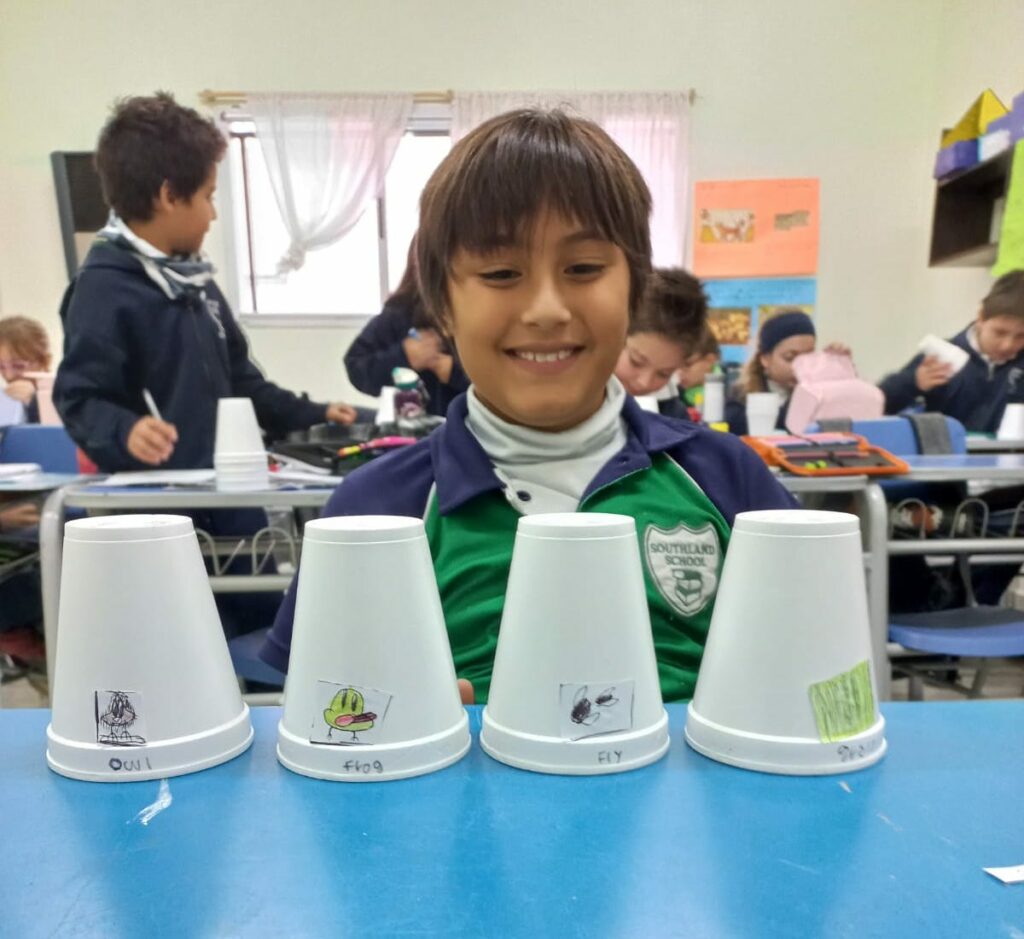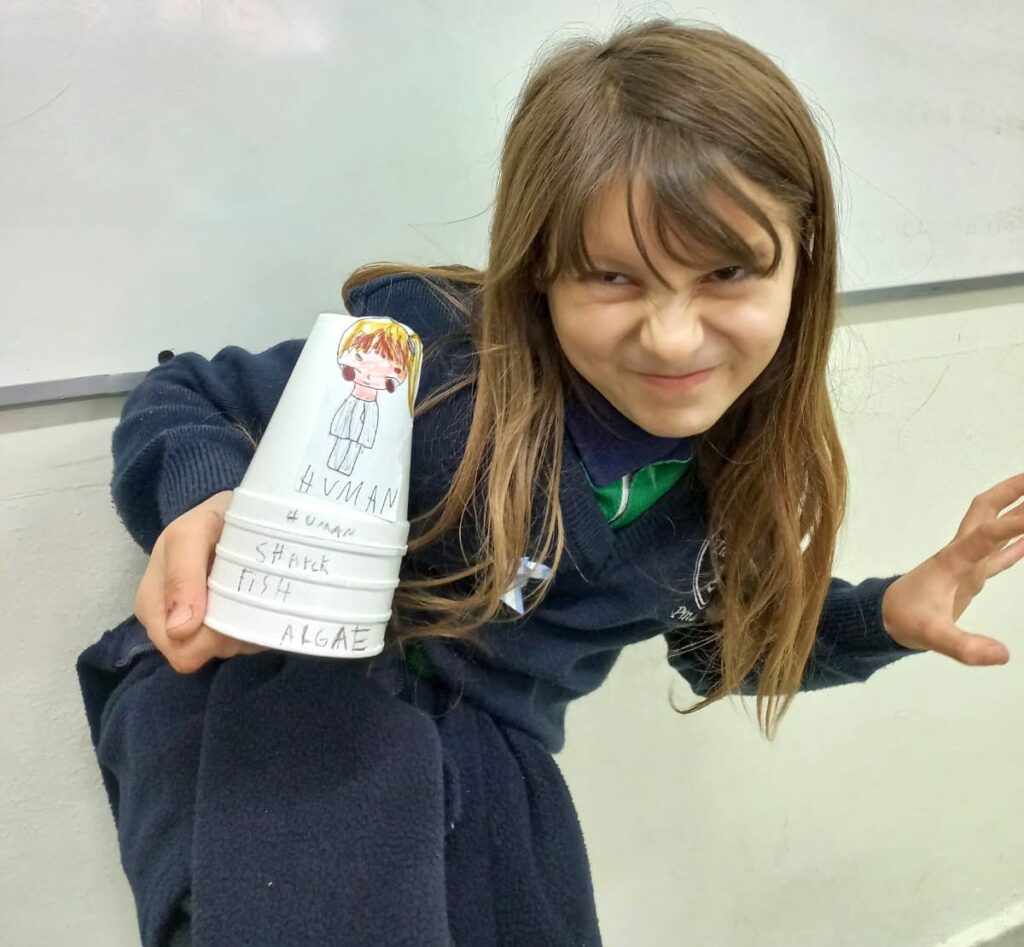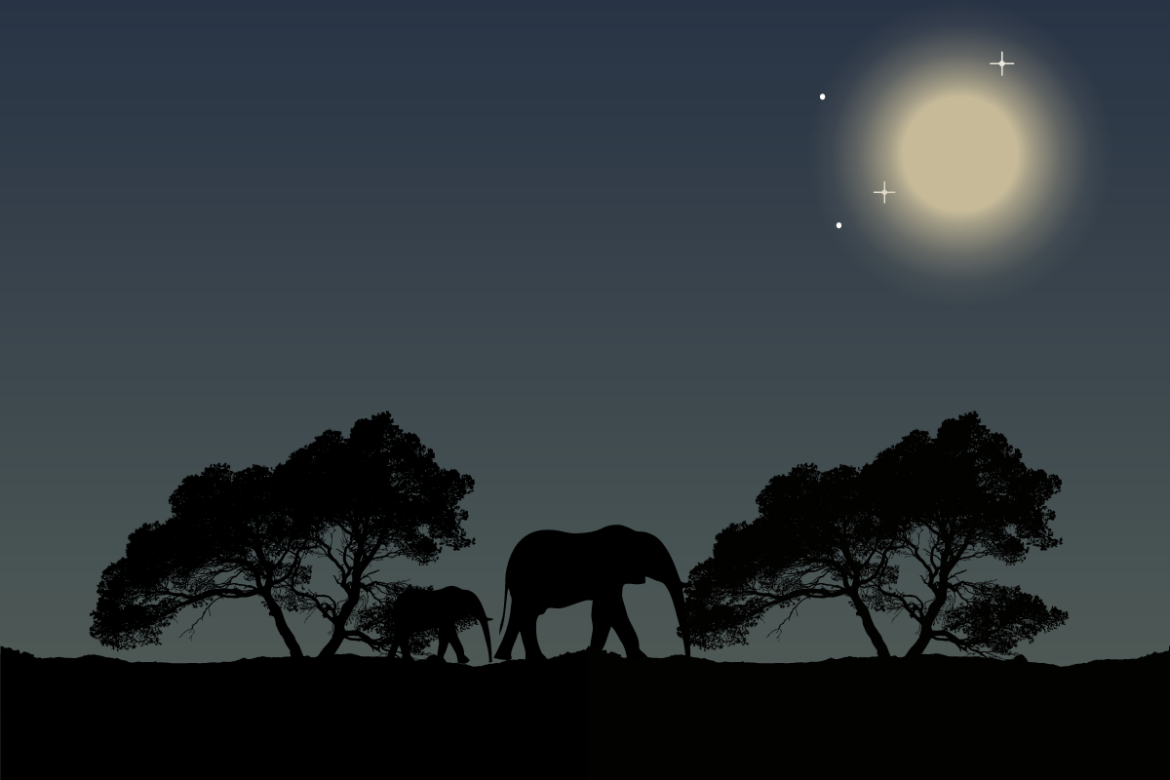El aprendizaje basado en el juego es muy importante en el proceso de enseñanza, por eso, en Tierra del Sur incentivamos a nuestros docentes a aplicar estos recursos educativos en el aula todo lo que sea posible.
En esta ocasión, los alumnos de 4to año de Nivel Primario tuvieron la oportunidad de trabajar en un proyecto de ciencia muy divertido, y a la vez, formativo. La profesora de inglés Agustina Guanella mostró a los chicos cómo hacer un modelo de cadena alimentaria para ver qué ocurre cuando se elimina a un ser vivo.
La cadena alimentaria es un concepto clave que ayuda a los estudiantes a situarse como humanos en la naturaleza, y les enseña que todos los habitantes del planeta configuramos un gran ecosistema repleto de seres vivos que nos relacionamos de tal manera que dependemos unos de otros. Esta dependencia se hace evidente en la cadena alimentaria que, mantenida con respeto, nos permite conservar el equilibrio ecológico. En este sentido, consideramos imprescindible que los alumnos interioricen valores y actitudes que lleven a cuidar el medio ambiente a través de la creación de buenos hábitos de respeto y convivencia con los seres y plantas que nos rodean.

Antes de empezar, la profesora explicó a los alumnos qué es una cadena alimentaria, en qué consiste y quiénes son los protagonistas del proceso: productores, consumidores de primer orden, consumidores de segundo orden y descomponedores. Luego, los chicos dibujaron imágenes de animales y plantas en vasos apilables siguiendo diferentes combinaciones de hábitats, como bosques y selvas. A continuación, los apilaron para demostrar cómo se va formando la cadena alimentaria.

Con esta sencilla actividad práctica los chicos aprendieron quién se come a quién en la naturaleza e incorporaron nuevos conceptos científicos y vocabulario en inglés que les permitirá continuar y ampliar su proceso de aprendizaje.
✹✹✹
Science Project: Maintaining Biodiversity activity
Play-based learning is very important in the teaching process, so at Tierra del Sur we encourage our teachers to apply these educational resources in the classroom as much as possible.
On this opportunity, 4th grade students had the chance to work on a very fun and formative science project. English teacher Agustina Guanella showed the kids how to make a food chain model to see what happens when a living thing is removed.
The food chain is a key concept that helps students to place themselves as humans in nature, and teaches them that all the inhabitants of the planet make up a large ecosystem full of living things that are related in such a way that we depend on each other. This dependency is evident through the food chain, which, if maintained in a respectful way, allows us to preserve an ecological balance. In this sense, we consider it essential that students incorporate values and attitudes that lead to taking care of the environment through the development of good habits of respect and coexistence with the beings and plants that surround us.
Before starting, the teacher explained to students what a food chain is, what it consists of and who the protagonists of the process are: producers, first-order consumers, second-order consumers and decomposers. Then they drew pictures of animals and plants in stackable cups following different combinations of habitats, such as forests and jungles. Finally, they stacked them to demonstrate how the food chain works.
With this simple hands-on activity, the children learned who eats whom in nature and incorporated new scientific concepts and vocabulary in English that will allow them to continue and expand their learning process.

